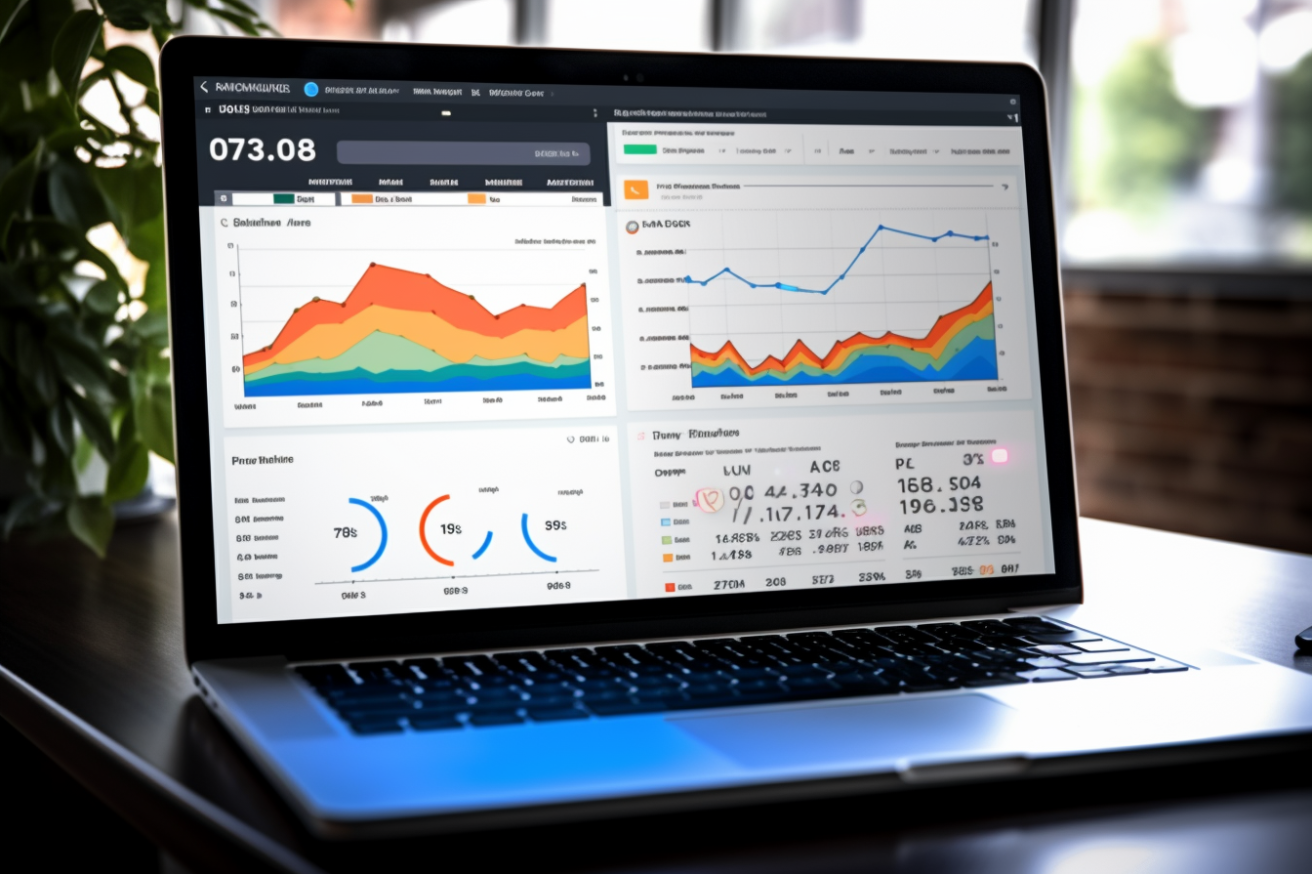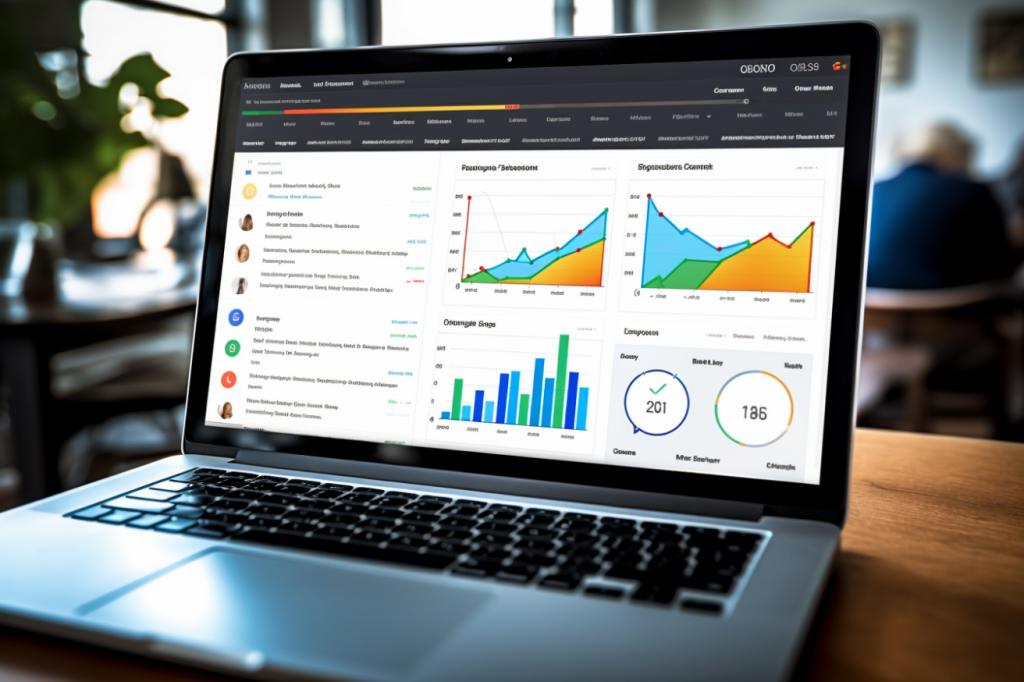Leveraging Analytics: Tools That Define Business Success
Introduction
In the digital age, where every click, scroll, and interaction can be captured, analyzed, and interpreted, businesses have unprecedented access to insights that can drive their strategies. Data, often termed as the “new oil,” has become the cornerstone for decision-making, innovation, and growth. But having access to vast amounts of data is only half the equation.
The real power lies in analyzing and interpreting this data to derive actionable insights, and this is where data analytics tools play a pivotal role.
Data analytics tools provide businesses the capability to sift through vast datasets, visualizing patterns, predicting future trends, and drawing conclusions that can steer the trajectory of their operations. Whether it’s understanding customer behavior, optimizing marketing campaigns, streamlining operations, or identifying new revenue streams, analytics tools offer the lenses through which raw data transforms into a treasure trove of insights.
However, with the plethora of tools available in the market, each promising to unlock the potential of your data, how do you choose the right one? And once chosen, how do you harness its capabilities to the fullest? This guide aims to demystify the realm of data analytics tools, offering insights into their features, benefits, best practices, and real-world examples of companies that have successfully harnessed their power.
Whether you’re a seasoned data scientist, a business leader looking to drive growth, or just a curious individual eager to understand the buzz around data analytics, this article promises a deep dive into the world of data-driven success. Let’s embark on this journey together.
The Rising Need for Data Analytics
As we navigate the information age, the generation and consumption of data have reached unprecedented levels. From social media interactions to e-commerce transactions, every digital touchpoint produces a wealth of data. But why has data analytics become such a focal point for businesses and organizations? Let’s delve deeper.
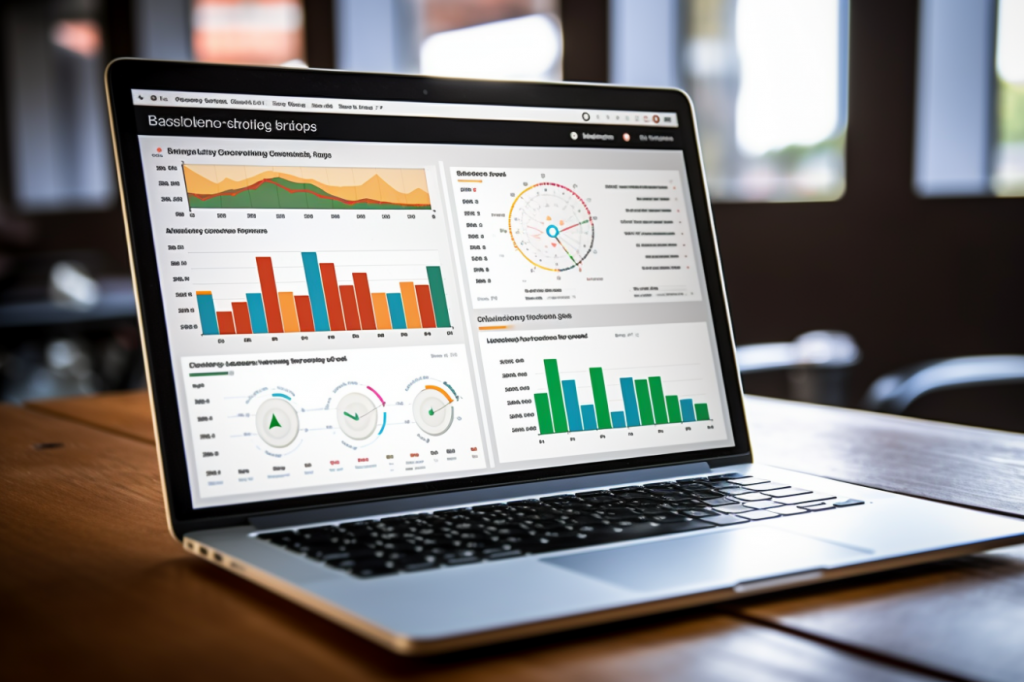
Growth of Big Data
The term “Big Data” has become a buzzword, but what does it truly signify? In essence, it refers to the massive volumes of structured and unstructured data produced every day, which is too vast for traditional databases to handle. Here are some insights:
- Volume of data generated daily: Current estimates suggest that every day, 2.5 quintillion bytes of data are generated. This data comes from myriad sources – from social media posts and digital photos to sensors and smart devices.
- The potential of harnessing this data for insights: While the sheer volume of Big Data might seem overwhelming, it presents a goldmine of opportunities. Companies that can analyze this data can gain insights into customer behavior, market trends, and operational efficiencies. This ability to derive actionable intelligence from Big Data sets forward-thinking companies apart from their competitors.
Data-Driven Decision Making
Gone are the days when decisions were solely based on intuition or past experiences. In today’s competitive landscape, data-driven decision-making has become the norm.
- Benefits of basing decisions on data: Data offers objectivity. Decisions backed by data are more likely to yield positive outcomes, minimize risks, and provide measurable results. For instance, e-commerce platforms can analyze user behavior data to optimize website layouts, leading to increased sales.
- Case studies showcasing the impact of data-driven strategies: Netflix, a global streaming giant, bases its content creation and recommendation algorithms on viewer data, leading to highly successful shows and movies. Similarly, Amazon’s recommendation system, driven by user purchase and browsing data, accounts for a significant portion of its sales.
Evolution of Analytics Tools
As the need for data analytics grew, so did the tools designed to facilitate it. These tools have evolved significantly over the years to cater to the growing and diverse needs of businesses.
- From traditional spreadsheets to sophisticated analytics platforms: While spreadsheets like Microsoft Excel provided basic data analysis capabilities, they were not equipped to handle Big Data. Modern analytics tools, on the other hand, offer powerful data processing capabilities, advanced visualization features, and machine learning integrations.
- Integration capabilities with other digital tools and platforms: Today’s analytics tools are not standalone entities. They integrate seamlessly with other business tools – from CRM systems to digital marketing platforms. This integration ensures a unified view of data, enhancing the accuracy and relevance of insights.
In summary, as the digital landscape expanded and the volumes of data skyrocketed, the need for robust data analytics tools became paramount. These tools, equipped with advanced features and integrations, enable businesses to navigate the complex world of Big Data, drawing insights that drive success.
Key Features to Look for in Data Analytics Tools
The right data analytics tool can be a game-changer for a business, offering insights that drive informed decisions and strategic moves. However, with a plethora of options in the market, how do you discern which tool aligns best with your needs? Here are some key features to consider when evaluating data analytics tools.
Data Collection and Integration
The foundation of any analytics endeavor is the data itself. The tool’s ability to collect, integrate, and process data from various sources is critical.
- Ability to collect data from multiple sources: Whether it’s from websites, mobile apps, IoT devices, or third-party platforms, the tool should be able to capture data from diverse sources seamlessly.
- Integration with other platforms and tools: Integration capabilities determine how well the analytics tool can pull data from other systems like CRMs, ERPs, marketing platforms, or e-commerce sites. This integrated approach ensures comprehensive data analysis, eliminating data silos.
Data Visualization
Raw data, in its numerical form, can be overwhelming. Visualization tools turn this data into understandable and actionable insights.
- Dashboards and reporting capabilities: A good analytics tool should offer customizable dashboards that provide a snapshot of key metrics at a glance. Reports, on the other hand, offer deeper dives into specific data sets.
- Customizable visualization options: Different businesses have different needs. The tool should allow users to create charts, graphs, heat maps, or any other visual representation that suits their specific requirements.
Predictive Analytics
Beyond analyzing past and present data, the true power of analytics lies in predicting future trends.
- Forecasting and predictive modeling: Tools equipped with machine learning capabilities can analyze past data to forecast future trends. Whether it’s predicting sales for the next quarter or forecasting website traffic, predictive analytics offers valuable foresights.
- Use cases for predictive analytics in various industries: In retail, predictive analytics can forecast inventory needs. In finance, it can help predict stock market trends. The applications are vast and varied.
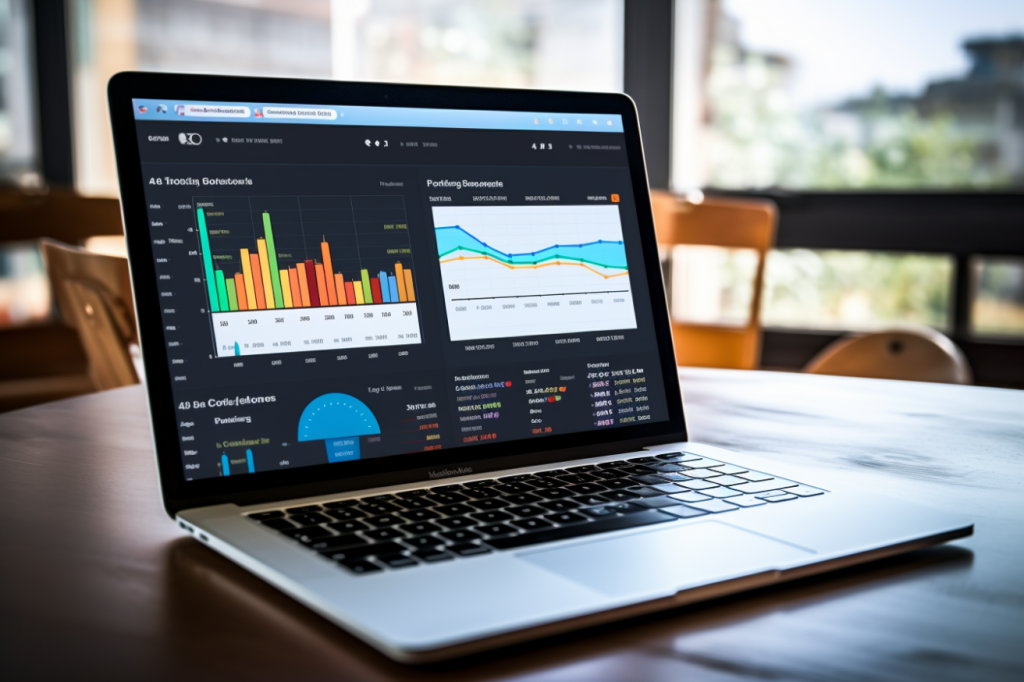
Data Security and Compliance
With increasing concerns about data breaches and stricter data protection regulations worldwide, ensuring data security is non-negotiable.
- Ensuring data protection and privacy: The tool should have robust encryption and security protocols to protect data from breaches and unauthorized access.
- Compliance with global data protection regulations: With regulations like GDPR in Europe and CCPA in California, the analytics tool must ensure compliance, safeguarding user data and avoiding potential legal ramifications.
Scalability and Performance
As businesses grow, their data needs evolve. The chosen analytics tool should be able to scale with these growing needs.
- Catering to varying volumes of data: Whether you’re a startup dealing with gigabytes of data or a multinational handling petabytes, the tool should process data efficiently without performance lags.
- Performance metrics to consider: Look for tools that offer fast query times, real-time data processing capabilities, and the ability to handle large data sets without compromising on performance.
In essence, the right data analytics tool should be seen as an investment. By prioritizing these key features and aligning them with your specific business needs, you can ensure that your investment yields actionable insights, driving success and growth.
4. Top Data Analytics Tools for Measuring Success
The market is brimming with data analytics tools, each promising unique features and benefits. Here, we’ll explore some of the top contenders, diving into their features, benefits, and how they can drive success in various business scenarios.

Tableau
Tableau, a leader in the world of data visualization, has transformed the way businesses view their data.
- Overview, features, and benefits: Tableau offers a user-friendly interface where users can drag and drop to create compelling, interactive visualizations and dashboards. With its ability to connect to a multitude of data sources, from databases to spreadsheets to cloud services, Tableau provides flexibility in data integration. One of its standout features is the ability to create real-time, interactive dashboards that can be shared across the organization.
- Suitable industries and use cases: From retail, where businesses can track sales and inventory, to healthcare, where patient data and treatment outcomes can be analyzed, Tableau’s versatility makes it suitable for a wide range of industries.
Google Analytics
For anyone with a digital presence, Google Analytics is almost synonymous with web analytics.
- Overview, features, and integration capabilities: Google Analytics provides insights into website traffic, user behavior, conversion rates, and much more. With features like audience segmentation, behavior flow, and e-commerce tracking, businesses can gain a comprehensive understanding of their online performance. Additionally, its integration capabilities with platforms like Google Ads make it a powerful tool for digital marketers.
- Benefits for website and e-commerce tracking: E-commerce businesses can track sales, understand cart abandonment rates, and identify high-performing products. Bloggers and content creators can identify top-performing content, audience demographics, and referral sources.
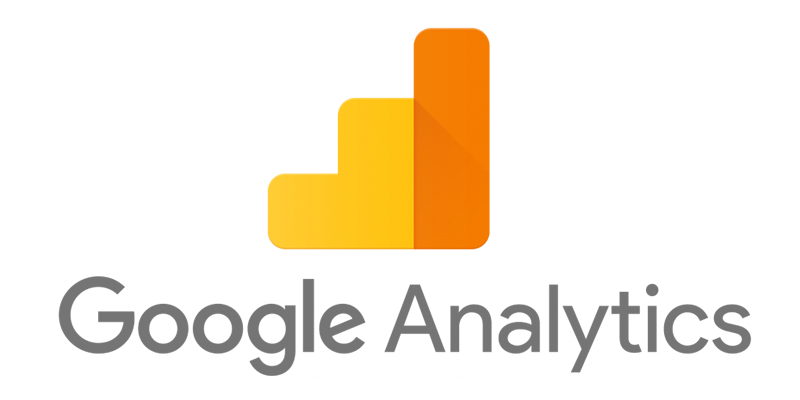
Microsoft Power BI
A part of the Microsoft suite, Power BI is a business analytics tool that turns data from various sources into coherent, visually immersive, and interactive insights.
- Overview and features: Power BI allows users to connect to a wide range of data sources, from Excel spreadsheets to cloud-based and on-premises data sources. Its drag-and-drop functionality, combined with a range of visualization options, allows for easy report creation.
- Integration with Microsoft’s ecosystem: For businesses already using Microsoft products, Power BI integrates seamlessly with tools like Excel, Azure, and SQL Server, allowing for a unified analytics approach.
SAS Analytics
A powerhouse in the analytics domain, SAS offers a suite of analytics tools tailored for various needs.
- Overview and advanced analytics capabilities: SAS Analytics provides an array of tools, from data management to advanced analytics to artificial intelligence. Its capabilities include predictive modeling, machine learning, text analysis, and optimization.
- Industries that can benefit from SAS: With solutions tailored for sectors like banking, healthcare, and manufacturing, SAS offers industry-specific analytics solutions that address unique challenges and needs.
Looker
A modern data platform, Looker offers data exploration and insights for every department at every scale.
- Overview, features, and cloud capabilities: Looker operates in the cloud, making it scalable and flexible. Its platform allows for data modeling, visualization, and collaboration. With its “LookML” language, users can define business metrics, create reusable code, and ensure consistent metrics across the organization.
- Use cases and benefits: From sales analytics where teams can track performance metrics, to inventory analysis for e-commerce platforms, Looker’s applications span various business scenarios.

Choosing the right data analytics tool hinges on understanding your business’s specific needs, the volume and sources of your data, and your long-term analytics goals. Each of these tools, with its unique features and capabilities, caters to different scenarios and requirements. Making an informed choice can be the first step towards harnessing the true power of your data.
Implementing Analytics Tools: Best Practices
While selecting the right data analytics tool is a critical step, its true potential can only be harnessed when it’s effectively implemented and utilized. Here are some best practices to ensure that you derive maximum value from your analytics tool.
Defining Clear Objectives
Before diving into data analysis, it’s essential to know what you’re aiming to achieve.
- The importance of knowing what you want to measure: Without a clear direction, you might find yourself drowning in a sea of data without extracting meaningful insights. Start by outlining the key metrics and KPIs that align with your business goals.
- Setting SMART goals for analytics: SMART (Specific, Measurable, Achievable, Relevant, Time-bound) goals can provide a clear roadmap for your analytics endeavors. For instance, instead of vaguely aiming to “increase website traffic,” a SMART goal would be “achieving a 10% increase in website traffic over the next quarter.”
Continuous Data Cleaning
Clean data is the cornerstone of accurate analytics.
- Ensuring data quality for accurate insights: Dirty or inconsistent data can lead to skewed insights. Regularly cleaning and updating your data ensures that your analysis is based on accurate and relevant information.
- Tools and techniques for data cleaning: Leveraging tools like OpenRefine or DataWrangler can assist in cleaning and refining data. Techniques could include removing duplicates, handling missing values, or standardizing data formats.
Training and Skill Development
A tool is only as good as the person wielding it.
- Investing in training for teams: Ensure that your team understands the intricacies of the chosen analytics tool. This could involve formal training sessions, workshops, or online courses.
- Keeping up with evolving tool features: Most analytics tools are continually updated with new features and capabilities. Regular training ensures that your team is always equipped to utilize the tool to its fullest potential.
d. Regularly Reviewing and Iterating
The world of data is dynamic, and what worked yesterday might not be relevant today.
- The importance of not setting and forgetting: Regularly review your analytics strategies, metrics, and outcomes. This iterative approach ensures that you’re always aligned with the changing business landscape and market dynamics.
- Periodically reviewing metrics and adjusting strategies: As your business evolves, so will your metrics and goals. Regular reviews ensure that your analytics endeavors remain relevant and impactful.
In conclusion, implementing an analytics tool goes beyond mere installation. It’s about aligning it with business objectives, ensuring data quality, investing in team capabilities, and adopting a dynamic approach that evolves with changing needs. By following these best practices, businesses can ensure that their analytics tool truly becomes a catalyst for informed decision-making and measurable success.
Challenges in Data Analytics and How to Overcome Them
Despite the undeniable power of data analytics tools, using them isn’t without its challenges. Recognizing these hurdles and devising strategies to overcome them is crucial for a seamless and effective analytics journey.
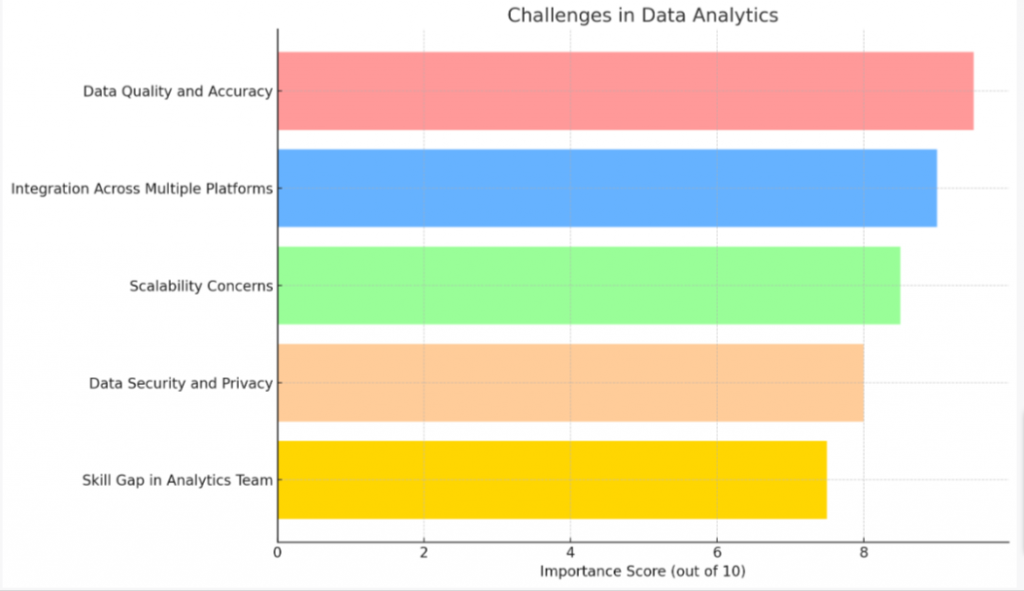
Overwhelming Volume of Data
The sheer volume of data available can sometimes be more overwhelming than enlightening.
- Filtering out noise to focus on relevant data: With data coming in from various sources, it’s essential to discern what’s relevant. Establishing criteria for data relevance and routinely filtering out noise ensures that you’re always working with meaningful data sets.
- Tools and techniques for effective data management: Database management systems (DBMS) like MySQL or Oracle can help store and organize large volumes of data. Additionally, using data warehousing solutions can allow businesses to consolidate data from different sources, making it more manageable and accessible.
Data Privacy Concerns
In an era where data breaches and privacy scandals make headlines, ensuring the privacy and security of data is paramount.
- Balancing analytics with data protection: While collecting and analyzing data is essential, it should never come at the expense of privacy. Ensuring data anonymization, where personal identifiers are removed, can help strike this balance.
- Best practices for data privacy: Regularly review and update data access permissions. Implement robust encryption methods and ensure compliance with global data privacy regulations, such as the GDPR or CCPA.
Keeping Up with Rapidly Evolving Tools
The world of data analytics is dynamic, with tools and technologies constantly evolving.
- Continuous learning and adaptation: Ensure that your team stays updated with the latest features and best practices related to your chosen analytics tool. This might involve periodic training sessions or subscribing to official tool updates.
- Subscribing to tool updates and industry news: Join forums, subscribe to newsletters, and be a part of communities that discuss and share updates about your analytics tool. Staying informed ensures that you’re always leveraging the latest capabilities of your tool.
In essence, while data analytics tools offer unparalleled insights, they also come with their set of challenges. By being proactive, keeping abreast of the latest trends, and prioritizing data privacy and relevance, businesses can navigate these challenges effectively, ensuring that their analytics journey remains smooth, insightful, and impactful.
7. Case Studies: Companies Excelling with Data Analytics Tools
Real-world examples offer tangible insights into the transformative power of data analytics tools. By examining how renowned companies leverage these tools, we can glean best practices, strategies, and outcomes that exemplify data-driven success.
Netflix’s Content Strategy
Netflix, with its global presence and diverse content library, has always emphasized the role of data in its success.
- How data analytics drives content decisions: Netflix collects vast amounts of viewer data, from what shows are binge-watched to which ones are abandoned midway. By analyzing this data, Netflix understands viewer preferences, which drives their content creation and acquisition decisions. For instance, the decision to produce hits like “Stranger Things” was influenced by analyzing viewer preferences for genres, actors, and storytelling styles.
- Tools and techniques employed by Netflix: Beyond traditional analytics tools, Netflix has developed in-house systems tailored to its needs. They employ a combination of big data platforms, machine learning algorithms, and predictive analytics to gauge viewer behavior and forecast content success.
Amazon’s Customer Insights
As the world’s largest e-commerce platform, Amazon’s success hinges on understanding its customers deeply.
- Using analytics for personalized customer experiences: Amazon employs data analytics to offer product recommendations, optimize its website layout, and even decide on product placements. Ever noticed the “Customers who bought this item also bought” section? That’s predictive analytics in action, analyzing past purchase data to suggest products.
- Tools and strategies driving Amazon’s success: Amazon uses a blend of proprietary systems and popular analytics tools. Their recommendation system, a significant sales driver, employs machine learning models trained on vast datasets of customer behavior. Additionally, Amazon Web Services (AWS) offers its suite of analytics tools, showcasing the company’s deep investment in data analytics.
These case studies underscore the point that when data analytics tools are used strategically, they can offer unparalleled insights, driving informed decisions and fostering growth. Companies like Netflix and Amazon, with their data-centric approaches, set benchmarks for others to follow, exemplifying the potential of a data-driven strategy.
Conclusion
Data has often been likened to the modern world’s gold, but unlike gold, its reserves are growing exponentially every day. This bounty of information, with its immense potential, can either be an asset or an overwhelming challenge, depending on how businesses approach it. The key lies in harnessing the power of data analytics tools.
As we’ve explored throughout this guide, these tools, with their multifaceted capabilities, can transform raw data into actionable insights, driving strategies, decisions, and outcomes. From visualizing intricate patterns to predicting future trends, they offer a lens to view data in ways that were previously unthinkable. Companies like Netflix and Amazon stand testament to the transformative power of data when combined with the right analytical tools.
However, it’s essential to remember that tools are just the medium. Their efficacy depends on clear objectives, continuous learning, adherence to best practices, and a commitment to innovation. As the digital landscape continues to evolve, so will the challenges and opportunities associated with data. Businesses that remain agile, informed, and proactive in their approach to data analytics will undoubtedly lead the charge, setting benchmarks in innovation, growth, and success.
In wrapping up, one thing is clear: the future belongs to those who not only understand their data but also know how to act on it. As the lines between the physical and digital worlds continue to blur, data analytics will be the compass guiding businesses towards uncharted territories, promising opportunities, and unparalleled success. Embracing this data-driven journey, equipped with the right tools and mindset, is not just an option but a necessity for every forward-thinking business.
References and Further Reading
For readers keen on diving deeper into the world of data analytics and the tools that drive its success, the following resources offer a wealth of knowledge, insights, and best practices:
- Davenport, T. H., & Patil, D. J. (2012). Data Scientist: The Sexiest Job of the 21st Century. Harvard Business Review. This article sheds light on the emerging role of data scientists and their pivotal role in extracting insights from big data.
- Marr, B. (2017). Big Data in Practice: How 45 Successful Companies Used Big Data Analytics to Deliver Extraordinary Results. Wiley. This book offers real-world case studies on how leading companies leverage big data to drive success.
- Google Analytics Academy. An online platform offering courses on how to make the most of Google Analytics, from the basics to advanced features.
- Tableau Public. A community-driven platform where Tableau users share interactive visualizations and insights, serving as an inspiration for new users.
- Looker’s Official Blog. Packed with articles, tutorials, and updates on the latest in Looker and the broader data analytics landscape.
- Power BI Community. A forum where Microsoft Power BI users discuss challenges, share solutions, and stay updated on the latest in Power BI.
- SAS Whitepapers. A collection of research papers and articles focusing on advanced analytics, machine learning, and the various applications of SAS tools.
- McKinsey & Company. (2016). The Age of Analytics: Competing in a Data-Driven World. This report provides a comprehensive look into how data analytics is reshaping industries and the economy.
- Jain, A. (2019). Building Data Science Teams. O’Reilly Media. A guide on assembling and nurturing high-performing data science teams, crucial for any organization looking to excel in data analytics.
- Netflix Technology Blog. A blog where Netflix’s engineering team shares insights, challenges, and innovations related to data, analytics, and the broader technology landscape.
Exploring these resources can provide a more in-depth understanding of the intricacies of data analytics, the tools that power it, and the strategies that leading companies employ to stay ahead in the data-driven world. Whether you’re a professional looking to hone your skills or an organization aiming to bolster your data strategies, these references can serve as valuable guideposts on your analytics journey.
